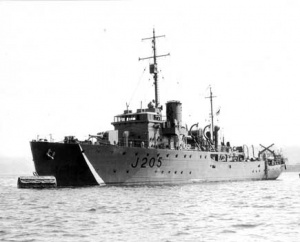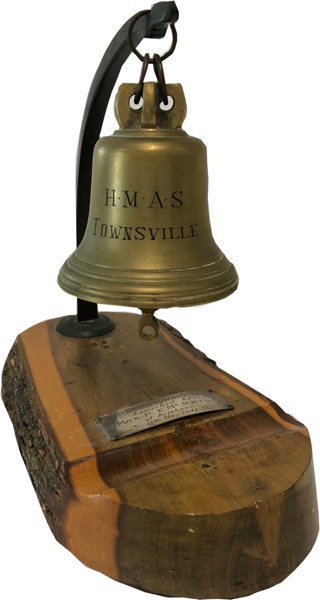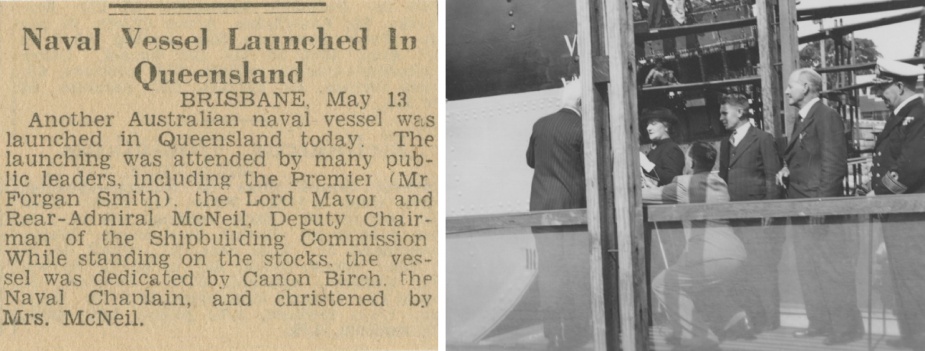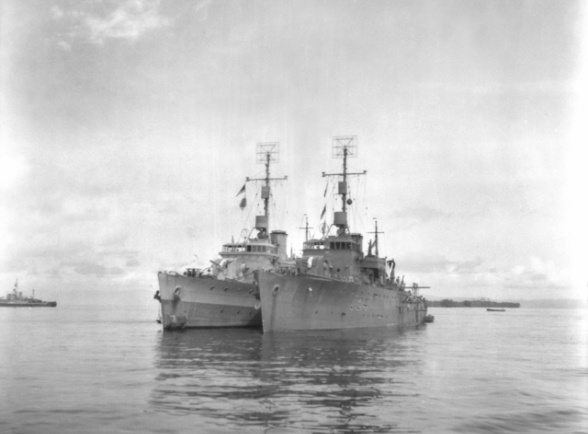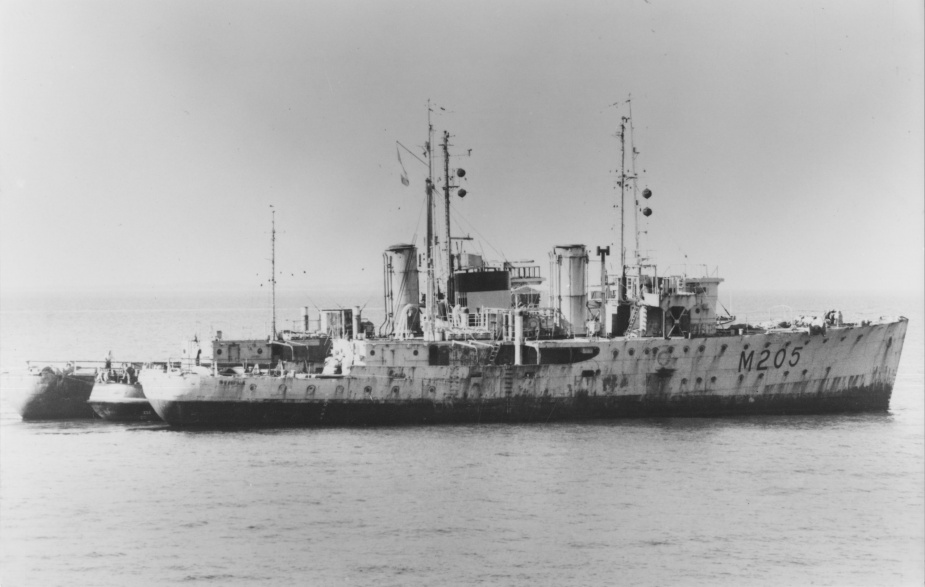HMAS Townsville (I)
| Class |
Bathurst Class |
|---|---|
| Type |
Australian Minesweeper |
| Pennant |
J205 |
| Builder |
Evans Deakin & Co Ltd, Brisbane |
| Laid Down |
16 November 1940 |
| Launched |
13 May 1941 |
| Launched by |
Mrs McNeil, wife of the Third Naval Member |
| Commissioned |
19 December 1941 |
| Decommissioned |
5 August 1946 |
| Dimensions & Displacement | |
| Displacement | 650 tons |
| Length | 186 feet |
| Beam | 31 feet |
| Draught | 8 feet 6 inhes |
| Performance | |
| Speed | 15 knots |
| Complement | |
| Crew | 85 |
| Propulsion | |
| Machinery | Triple expansion, 2 shafts |
| Horsepower | 1750 |
| Armament | |
| Guns |
|
| Other Armament |
|
| Awards | |
| Battle Honours | |
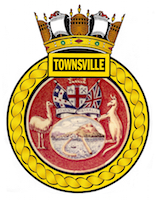
HMAS Townsville was one of sixty Australian Minesweepers (commonly known as corvettes) built during World War II in Australian shipyards as part of the Commonwealth Government's wartime shipbuilding programme. Twenty were built on Admiralty order but manned and commissioned by the Royal Australian Navy. Thirty six (including Townsville) were built for the Royal Australian Navy and four for the Royal Indian Navy.
HMAS Townsville was laid down in the yard of Evans Deakin & Co Ltd, Brisbane on 16 November 1940. She was launched by Mrs PE McNeil, the wife of the Third Naval Member, on 13 May 1941 and commissioned at Brisbane on 19 December 1941 under the command of Lieutenant Commander John Abbott, RAN (Emergency List).
On 13 August 1942 Townsville assumed responsibility for her first east coast convoy, bound from Sydney for Melbourne. It was the first of many she was to shepherd through dangerous waters on a two year tour of duty on the Australian coast. It included the period of the maximum Japanese effort against the Allied supply line. Twelve ships were sunk off the Australian coast with the loss of more than 150 merchant seamen. Only one ship, the 4800 ton Iron Knight, was lost in a convoy under Townsville's protection.
On 31 May 1944 Townsville departed Brisbane to begin a period of escort and patrol duties in New Guinea waters. Five months were spent in operations from Milne Bay to Morotai, including Madang, Hollandia, Langemak, Wakde, Noemfoor and Manus.
Returning to the mainland in November 1944, Townsville carried out a series of minesweeping operations before returning to Milne Bay on the last day of the month. She remained in New Guinea waters operating on patrol in mainly the Morotai/Biak area until June 1945, when she proceeded to Melbourne for refitting. The refit was in progress when hostilities ended.
In the post war period Townsville operated as a unit of the 20th Minesweeping Flotilla in the New Britain area and in Australian home waters. She paid off into Reserve at Fremantle on 5 August 1946. In more than four and a half years of seagoing service Townsville steamed 155,450 miles. Townsville was sold on 8 August 1956 to the Hong Kong Delta Shipping Co, Hong Kong, for breaking up.
Note: This video is hosted on YouTube. Department of Defence users will not be able to view this video on the Defence Protected Network.
This cine film has been placed online as part of the Sea Power Centre - Australia’s ongoing archival digitisation program.
Further reading
- 'The Corvettes: Forgotten Ships of the Royal Australian Navy' by Iris Nesdale - published by the Author, October, 1982.
- 'Corvettes - Little Ships for Big Men' by Frank B Walker - published by Kingfisher Press, NSW, 1996.
- 'The Australian Centenary History of Defence Volume III, The Royal Australian Navy', Edited by David Stevens, Oxford University Press, South Melbourne, Victoria, Australia, 2001.

